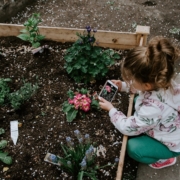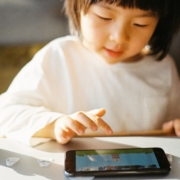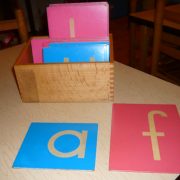Top tips for decluttering your child’s room
The tinsel is tucked away, wrapping paper recycled and the new year is upon us—as are piles and piles of toys, which seem to have a knack of taking over before we’ve noticed. That said, it’s never too late to declutter and actually, just-after-Christmas is the perfect time because children will be have some new things to distract them from the old.

Maria Montessori believed that external order facilitates internal order. Tidiness and predictability in a physical space help children to feel secure, calm and in control. And Montessori classrooms are organised as such, with fewer materials rather than an overwhelming mass of things that are likely to create chaos and lack of clarity in a child’s mind.
Why not do the same at home?
Does this sound like a monumental task? Not to worry, we can help. Here are some top tips to help you decide what stays and what goes (as per Montessori principles of play):
Toys to DISCARD:
- Broken toys
- Incomplete toys
- Toys that promote violence
- Toys that you were pressured to buy
- Toxic toys (if not sure about the safety, discard)
- Toys too complicated or too fragile to manipulate.
Toys to KEEP:
ROTATE toys:
Not all toys have to be out all the time. If you have whittled down to the must-haves and you’re still uncomfortable with the space they’re taking up, you could pack some away (per season or according to interest) until a later time—and then swap them out. If the stored toys aren’t missed, you could, of course, discard them at a later date.
INCLUDE your child:
It’s good for children to be part of the decluttering process; not only does it encourage them to think of others and give generously (perhaps you will donate the discarded toys to a charity or local playgroup/school) but respects their autonomy as little people who are able to make decisions. Encourage them to think about why they might want to keep something and to weigh up play value at home with sharing and allowing others to experience the joy of play.
BOOKS:
Books don’t quite fit into the toy category and are usually worth keeping but it is a good idea to revisit shelves and donate stories that are not read much anymore and don’t have sentimental value.
What you’ll find, after you’ve had a good cleanout, is that your head also feels clearer; and you’ll remember that in all likelihood, your children played with about 10 per cent of the toys they owned!
Source: The Montessori Family
Photo by Vanessa Bucceri on Unsplash















